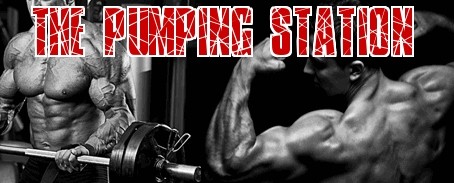Resistance Bands Workout Routine
Resistance band training has two distinct advantages; training bands will fit easy into any carry bag if traveling and secondly it will maintain resistance throughout the range of motion (ROM). Unlike weight-training there are parts of the movement when gravity is not working directly on the muscle, but when training with bands the concentric and eccentric movement will have constant tension through full ROM.
The down side of training with resistance bands is that you won't be able to push to your max, nevertheless you should select bands that are appropriate to your strength. The bands will always be secured in such a way that you get resistance at the bottom of the movement.
The following movements can be done using training bands. A brief explanation on how to secure the training band is part of each movement explained below:
EXERCISE 1: BENCH-PRESS:
Secure a corner of the band under the top of the bench, near the legs where your head would be. Holding the band in a bench-press position pushing upwards for reps, exactly like a bench-press.
EXERCISE 2; CROSS-OVERS:
Secure the band around a post, step back facing away from the post, arms raised to your sides with your palms facing forward, you then bring your slightly bent arms across your chest.
EXERCISE 3; BICEP CURLS/TRICEPS EXTENSIONS:
Standing on band with legs about shoulder width apart so that tension starts with your arms straight down. Holding handles with palms up, you then simply curl upwards just like you would D/B's.
EXERCISE 4; SKULL-CRUSHERS:
Set up the training band the same way you did with bench press. Pointing both elbows forward and then holding the band perform the skull-crusher movement just like you would when using a barbell.
EXERCISE 5; SHOULDER PRESS:
Standing on the band with tension starting with hands at shoulder level. Holding handles with palms forward using bottom part of the handle pressing the backside of your hands. You then press upward just like you would when doing a dumbbell press.
EXERCISE 6; LATERAL RAISES:
Stand on the training band so tension starts with arms at your sides. Keeping your arms as straight as possible, raise your arms outwards to your sides until they are parallel to the floor.
EXERCISE 7; UPRIGHT ROWS:
Stand on the training band so tension starts with arms at sides. Holding the band pull upwards just like you would do when holding a barbell.
EXERCISE 8; ROWING:
Tie the training band to a stationary post. Standing backwards so that the tension starts with your arms raised up in front of you. Keeping feet firmly planted and back straight (or sitting), pull back just like you would do using a cable row.
EXERCISE 9; BACK FLYES:
Tie training band to a stationary post. Standing backwards so that the tension starts when your arms are raised forward. Keeping your arms as straight as possible and feet firmly planted, you then move your arms backwards so they are fully extended to both sides.
EXERCISE 10; GOOD-MORNINGS:
Standing on the training band so that tension begins with your hands clasped behind your neck. Keeping legs slightly bent, stand up straight while raising backwards just like doing normal good-mornings.
EXERCISE 11; SQUATS:
Stand on the training bands so that tension starts with your hands at shoulder level in a full squat position. You then stand up without locking your knees out and keeping both hands on your shoulders, just like performing a normal barbell squat.
EXERCISE 12; CALF RAISES:
Standing on the training band with toes (front foot) so tension starts with hands at shoulder level and standing with locked knees. Holding the tensions while keeping hands shoulder height you then stand on your toes, just like you would do normal calf raises on a machine.
Click Here to Sign Up for Your Free Bodybuilding Magazine Subscription
